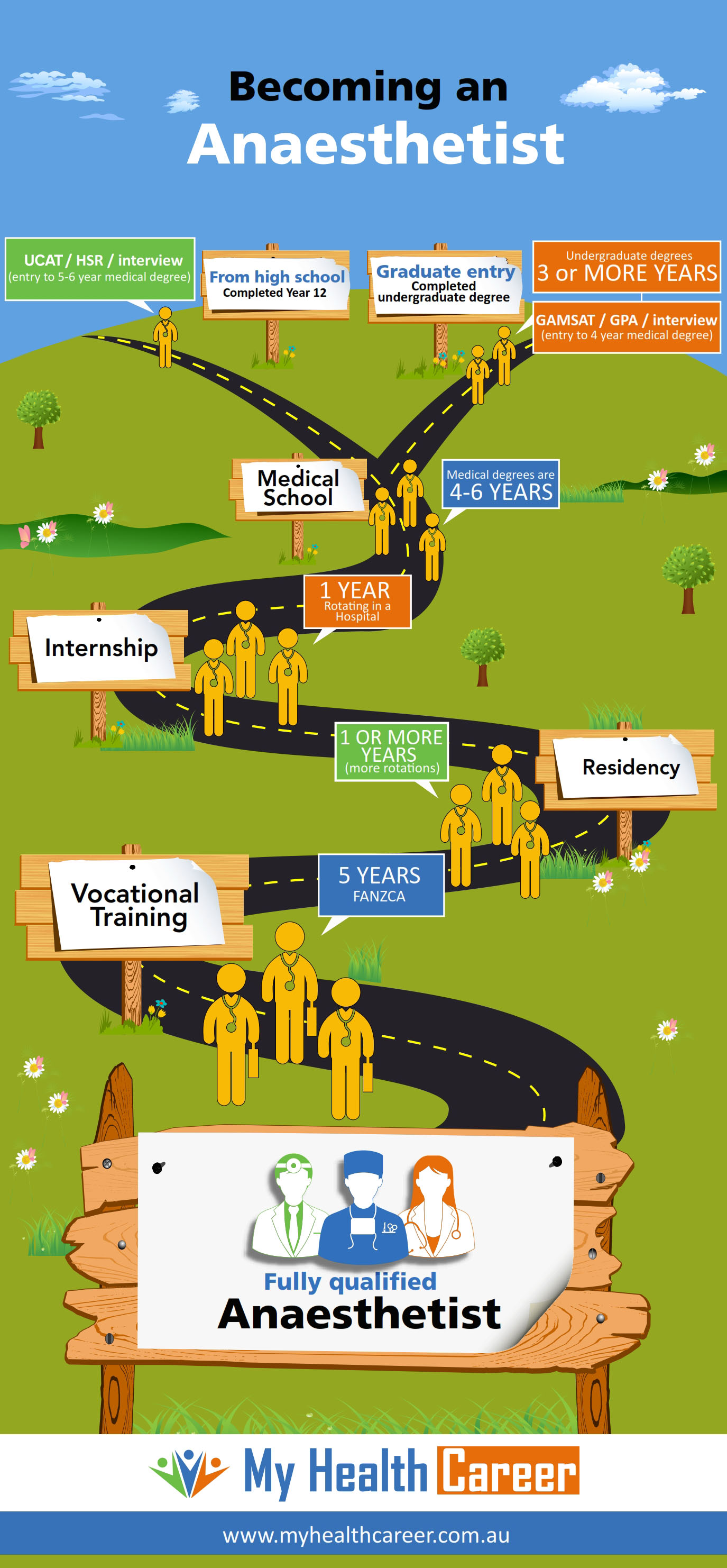Become an anaesthetist

You can download this infographic as a jpeg and print it out.
From high school to become an anaesthetist
Check with the university or universities you are applying to about the entry requirements for high school graduates. This may involve:
-
- UCAT – you may need to register for and sit the Undergraduate Clinical Aptitude Test and achieve a high score
- HSR – your high school rank at the end of grade 12 may need to be an ATAR of 99 or better for direct entry into medical school, but it is lower for some medical schools; click here for ATAR and entry requirements for every medical school in Australia in 2022
- Interview – an interview my also be used by the university as a way of selecting which students will gain entry into their medical school
Some universities offer a 5 or 6 year undergraduate medical degree.
Some universities offer a slightly different pathway for high school graduates. If you have provisional entry into medicine from high school, you will do a 2 year accelerated undergraduate degree (e.g. Biomedical Science) before entering medical school. In this pathway you will do a 4 year medical degree following on from your 2 year accelerated biomedical science / health science degree.
Graduate entry to become an anaesthetist
Check with the university or universities you are applying to about the entry requirements for university graduates. This may involve:
- GAMSAT – you may need to register for and sit the Graduate Medical School Admissions Test and achieve a high score (click here for Dr Gerry Considine’s tips for GAMSAT success)
- GPA – your grade point average, that is, the average of your grades in your undergraduate university degree (the highest being 7) may be used as part of the entry criteria
- Interview – an interview my also be used by the university as a way of selecting which students will gain entry into their medical school
In Australia the medical degree is generally 4 years when you are entering as a university graduate.
Summary – how to become an anaesthetist
Medical Degree (4 to 6 years)
Medical degrees in Australia are between 4 and 6 years. This depends on whether you are coming into the medicine via an undergraduate or postgraduate pathway.
Internship (1 year)
Internship involves a number of rotations completed in different departments in a hospital.
Residency (1 or more years)
More rotations in a hospital. Some junior doctors stay in this part of the medical training pathway for a number of years. This is because entry into the vocational training programs (e.g. anaesthesia) can be competitive.
Vocational training (5+ years)
- FANZCA – It takes 5 years to complete a Fellowship of Australian and New Zealand College of Anaesthetists.
- Please note that you do not automatically gain entry into the vocational training position of your choice. There are a limited number of positions, and entry can be competitive.


